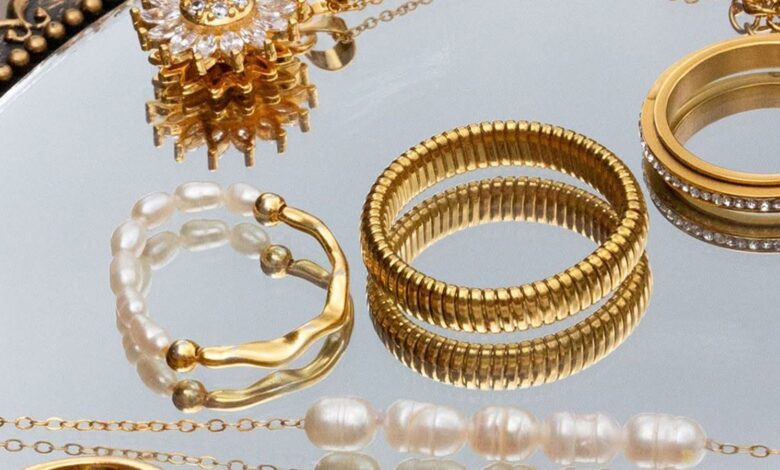What are worry or anxiety rings?

Worry rings, also known as anxiety rings or fidget rings, have gained popularity as a discreet and accessible tool for managing stress and anxiety. These rings typically feature spinning bands or movable beads that allow users to engage in repetitive motion, which can have a calming effect on the nervous system. spoke to experts to understand how they work and what made them so popular.
How do worry rings work?
Dr Ambarish Ghosh, neuropsychiatr at CMRI Hospital, Kolkata, said that the spinning motion of the outer band provides tactile and visual stimulation—a soothing activity for restless hands. “This repetitive action helps redirect nervous energy, making it an effective tool for grounding and relaxation,” he said.
Story continues below this ad
Dr Rimpa Sarkar, clinical psycholog and founder of Sentier Wellness, Mumbai, concurred, and said that worry rings work on the principle of sensory stimulation and grounding techniques. “When someone experiences anxiety, their mind often races with intrusive thoughts. Fidgeting with a worry ring provides tactile engagement, redirecting focus from dressing emotions to repetitive physical action. This process can help regulate the autonomic nervous system, shifting the body from a heightened stress response to a more relaxed state,” she said.
Like fidget spinners and stress balls, worry rings offer a subtle and socially acceptable coping mechanism for anxious energy. “With fidget tools, the feedback loop enhances calm behaviour. Over time, the brain associates fidgeting with relief from anxiety, creating neural pathways that support better stress management,” said Dr Ghosh.
Why are they so popular among people?
One of the main reasons worry rings appeal to many is their discreet design. “Unlike stress balls or other fidget tools, these rings can be worn as stylish accessories, making them convenient for professional, social, or academic settings. Not just that, engaging in repetitive motion can provide a sense of comfort and ritual, much like meditation beads,” said Dr Sarkar.
Ishita Kumari, a student at Symbiosis University, Pune, shared how an anxiety ring helped her break her nail-biting habit. “I’d fidget with anything in my hand—when sitting idle, talking to someone, or during exams. My mum gifted me a set of jewellery from SHEIN a year before the Covid-19 pandemic, and one of the rings spun like a fidget spinner, though it looked like a regular ring,” she said.
Kumari later realised the concept of anxiety rings through online articles, but then, she was already using it daily. “It matched every outfit, and I’d keep fidgeting with it,” said the 22-year-old. It became the most unique piece of jewellery she owned, and she believed it helped relieve her stress and anxiety.Story continues below this ad
Are they effective?
While worry rings are not a substitute for therapy or professional intervention, Dr Sarkar said that they can be a useful self-soothing tool for individuals who experience mild to moderate anxiety, nervous habits, or sensory needs. Research in behavioral psychology supports the use of fidgeting tools as a way to enhance focus, reduce tension, and provide a sense of control.
They can come in different varieties:
Spinner Rings – A smooth, continuous spin to help ease anxious thoughts.Slider Rings – Subtle movement for a calming fidget, perfect for restless hands.Rotating Rings – Effortless motion that keeps your fingers busy and your mind at ease.
Fidget rings can also come in handy in other ways:
Dr Sarkar noted that fidgeting occupies restless hands and redirects excess energy, allowing the brain to concentrate on cognitive tasks—whether working, studying, or sitting through a long meeting. They can also be combined with breathing exercises or meditation for added relaxation.Story continues below this ad
“Anxiety rings can act as a substitute for habits like nail-biting, hair-pulling, or smoking keeping hands occupied,” added Dr Ghosh. These rings also provide sensory input and self-regulation, which can be particularly beneficial for individuals with ADHD, autism, or sensory processing disorders.







